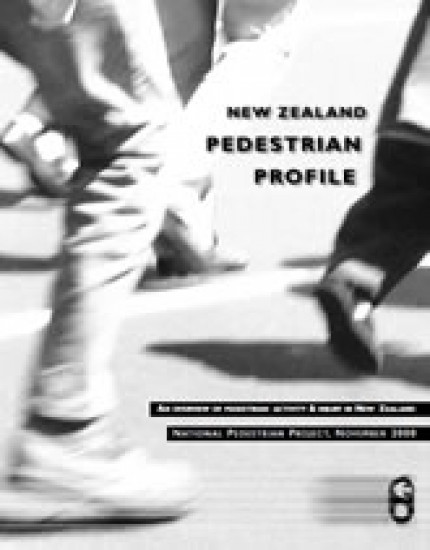This profile aims to make visible the extent and importance of pedestrian activity and injury in New Zealand. Its focus is on walking as a transport mode, and it aims to provide an accessible overview to those who plan our communities and manage our roads.

Walking is an essential component of our transport mix, offering significant benefits to individuals and communities, as well as to our transport system.
Walking is a crucial travel mode for those with limited access to cars, providing transport independence on its own for short journeys, and in association with public transport for longer journeys.This is particularly important given the significant proportion of New Zealanders with limited access to a car - a situation reflected in the following statistics:
The sustainability of our urban transport system depends both on increasing the efficient use of the transport network by motorised traffic and increasing the use of non-motorised modes such as walking for short trips.
While much of our transport planning and thinking has traditionally focused on longer distance travel, 30% of our land travel trips are for distances of under two kilometres.
Note that this does not include walking trips (18.7% of our travel trips), as distance travelled was not collected for these. When the percentage of walking trips which have been estimated to be for distances of under two kilometres (see page nine) are included, this 30% figure rises to include around 46% of all travel trips undertaken by households in New Zealand.
The high proportion of short trips in our travel also holds true when looking specifically at private motor vehicle trips. Again, 30% of private motor vehicle trips are for distances of under two kilometres in length. These short motor vehicle trips:
For short trips, walking is an efficient and sustainable mode. It causes virtually no noise or air pollution, and the only energy it requires is provided directly by the traveller. It requires little space, and is economical as a transport mode, costing far less than auto and public transport, both in direct user costs and in terms of public infrastructure required.
Walking will be particularly important in our major centres as they move toward higher density communities that facilitate and rely on increased pedestrian activity.
Figure 1: Percentage of household travel trips by trip length (excludes walking trips)

Most public transport journeys involve a walking component. Effective public transport relies in part on being able to walk to and from public transport in an environment that is safe, direct and pleasant.
Many of our motor vehicle trips include a pedestrian component. In the Auckland Region, analysis of data gathered as part of a 1992 survey of regional household travel found that 36% of household travel journeys combined motor vehicle travel with pedestrian activity (Auckland Regional Pedestrian Profile, Auckland Regional Council, 1999).
The health benefits of walking to individuals are well recognised. It is the most accessible form of exercise for improving cardio-vascular fitness, reducing the risk of heart disease and controlling obesity.
However, pedestrian activity also plays an important role in maintaining the health and well-being of our communities - enhancing their liveliness, providing the ‘eyes on the street’ that help keep our neighbourhoods safe, and enabling older members of the community to remain socially connected.
Walking is also good for local economies. Pedestrians provide the ‘foot traffic’ that is essential to many businesses, particularly in local communities, while pleasant pedestrian environments encourage tourists to spend more time - and money - in our urban environs.